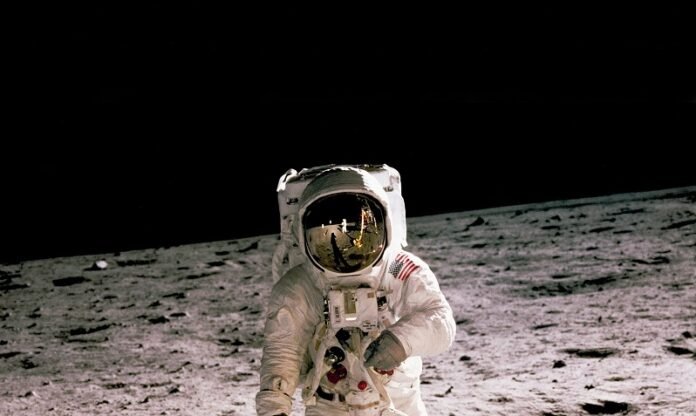Un demi-siècle après les missions Apollo emblématiques qui ont permis à douze hommes de marcher sur le Lune entre 1968 et 1972, NASA est prêt à se lancer dans une démarche ambitieuse Lune d'Artémis Mission designed not only to create long term humain presence on and around the Lune but also to learn lessons in preparation for humain missions and habitations on Mars. Profond espace humain habitation, enabling les humains to become a multi planète species to thwart the risk of extinction is still a very far dream however a beginning is to happen in near future.
“Since, in the long run, every planétaire civilization will be endangered by impacts from espace, every surviving civilization is obliged to become spacefaring—not because of exploratory or romantic zeal, but for the most practical reason imaginable: staying alive.” –Carl Sagan, 1994.
Artemis I, un test en vol sans équipage, le premier d'une série de Artemisles missions de plus en plus complexes de Lune, devrait décoller le 29 août 2022. Cela ouvrira la voie à de futurs vols en équipage (Artemis II, Artemis III et au-delà) vers le Pois surface. En 2024, Artemis fera débarquer la première femme et la première personne de couleur au Lune.
Que ensembles Artemis Son objectif est de construire un camp de base sur la surface lunaire pour donner aux astronautes un endroit où vivre et travailler sur la Lune. lune. Artemis Base Camp includes a modern cabin, a rover, and a mobile home. It is true that les humains have been living and working on International Space Station (ISS) for several years however Artemis Mission will allow astronauts to live on the surface of another celestial body, hence one can argue that Artemis would be first concrete step towards colonisation of deep espace. This aspect makes Artemis special.
L'Artémis Lune Mission, NASA collaborative programme with European Space Agency (ESA) and Canadian Space Agency (CSA) has three objectives –scientific discovery, economic benefits, and inspiration for new generation. There are six components of the mission
- Orion spacecraft: The exploration vehicle that will carry crew to espace, provide emergency abort, sustain the crew during the travel and provide safe re-entry to the Earth.
- Space Launch System (SLS) Rocket: The heavy-lift rocket that will launch Orion spacecraft.
- Exploration Ground Systems (EGS): soutiendra le lancement et la récupération des astronautes de retour.
- The Gateway: the spaceship in lunar orbite that will serve as multi-purpose outpost en orbite le Lune where astronauts will transfer between Orion and the lander. This will provide essential support for long-term humain return to the lunar surface
- Humain Landing System: Lander will take astronauts from the Gateway in the lunar orbite à la surface du Lune and back to the Gateway in the orbite.
- Camp de base Artemis : servira de domicile et de lieu de travail à un équipage de quatre astronautes à la surface du Lune pendant environ 30 à 60 jours. Cela permettra à l'équipage de rester sur le Lune jusqu'à deux mois à la fois.
Humain habitation system is the key piece of the mission for living longer in deep espace both for extending duration of operation as well as for optimal physical and mental wellbeing of the astronaut. This is certainly an imperative for future mission to Mars. Le Transit Habitat est prévu pour des missions de longue durée.
Soutenu humain habitation on the surface of the Lune is a very ambitious goal because of unique challenges posed by the lunar environment and the remoteness from the Earth. Notwithstanding this, experiences gained in successful operation of International Space Station (ISS) for over two decades should contribute in Artemis Lune Mission.
The Artemis Base Camp, as humanity’s first long-term home on land outside Earth will enable humain missions à Mars. With this, the idea of making les humains multi-planète species begins.
***
Sources:
- NASA. Artémis. Disponible à https://www.nasa.gov/specials/artemis/
- NASA. Programme Artémis. Disponible à https://www.nasa.gov/artemisprogram
- G. Flores, D. Harris, R. McCauley, S. Canerday, L. Ingram and N. Herrmann, “Deep Space Habitation: Establishing a Sustainable Humain Presence on the Moon and Beyond,” 2021 IEEE Aerospace Conference (50100), 2021, pp. 1-7, doi: https://doi.org/10.1109/AERO50100.2021.9438260
- NASA. Artemis Deep Space Habitation: Enabling a Sustained Humain Presence on the Moon and Beyond. Available at https://ntrs.nasa.gov/api/citations/20220000245/downloads/Artemis%20Deep%20Space%20Habitation%20Enabling%20a%20Sustained%20Human%20Presence%20on%20the%20Moon%20and%20Beyond%20(3).pdf
***






































